Plants

Plants are a cornerstone of wildlife habitat. You may notice that The Little Habitat Project includes more actions for plants than for the soil, water, infrastructure, and education components. The four plant action areas are: noxious invasive plants, native plants, vegetation layers, and plant practices.
We recommend that project sites have at least 70% native plants for the greatest wildlife benefits. For more information, read this article from the National Wildlife Federation and this article from the University of Maryland.
Certification Levels
Level I: Acorn
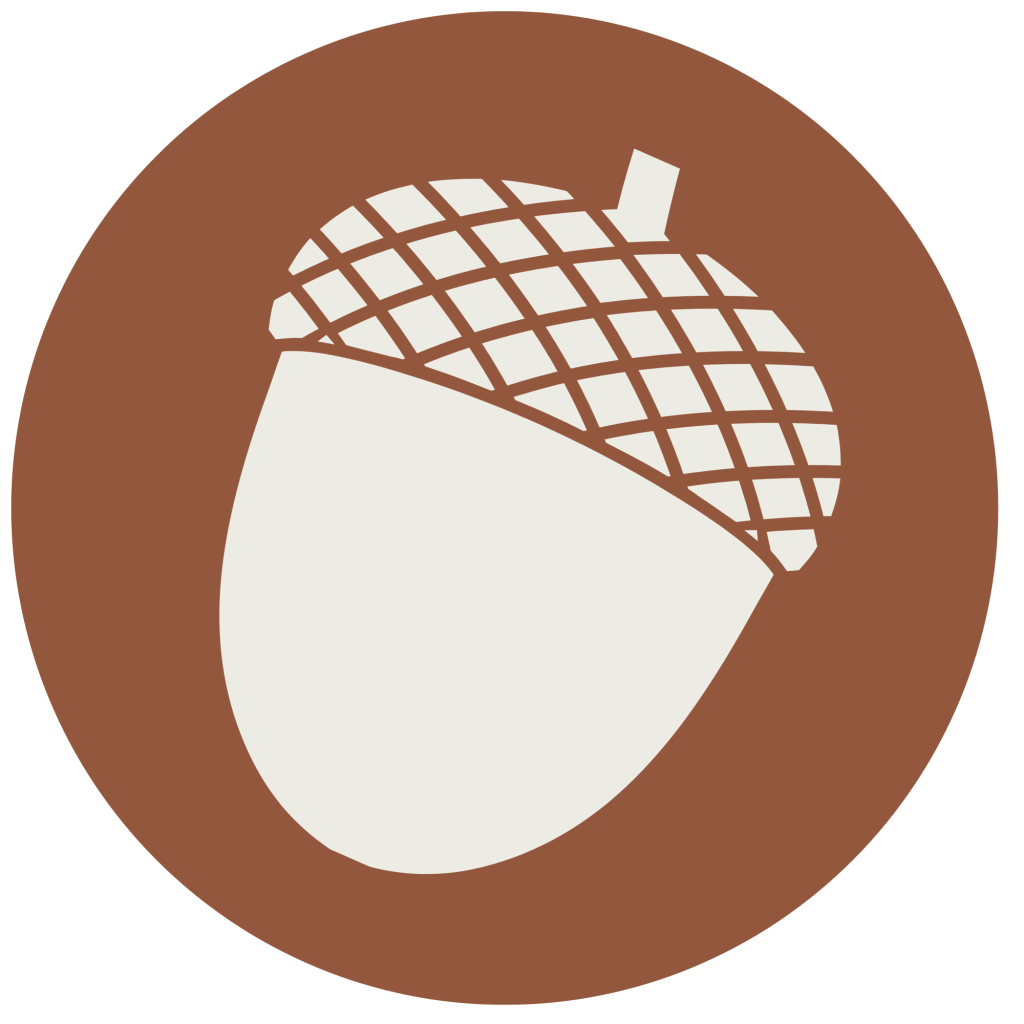
- Manage noxious invasive plants.
- Provide 1 out of 4 vegetation layers.
- Incorporate at least 8 species of native plants.
- Add at least 8 plant practices.
Level II: Seedling
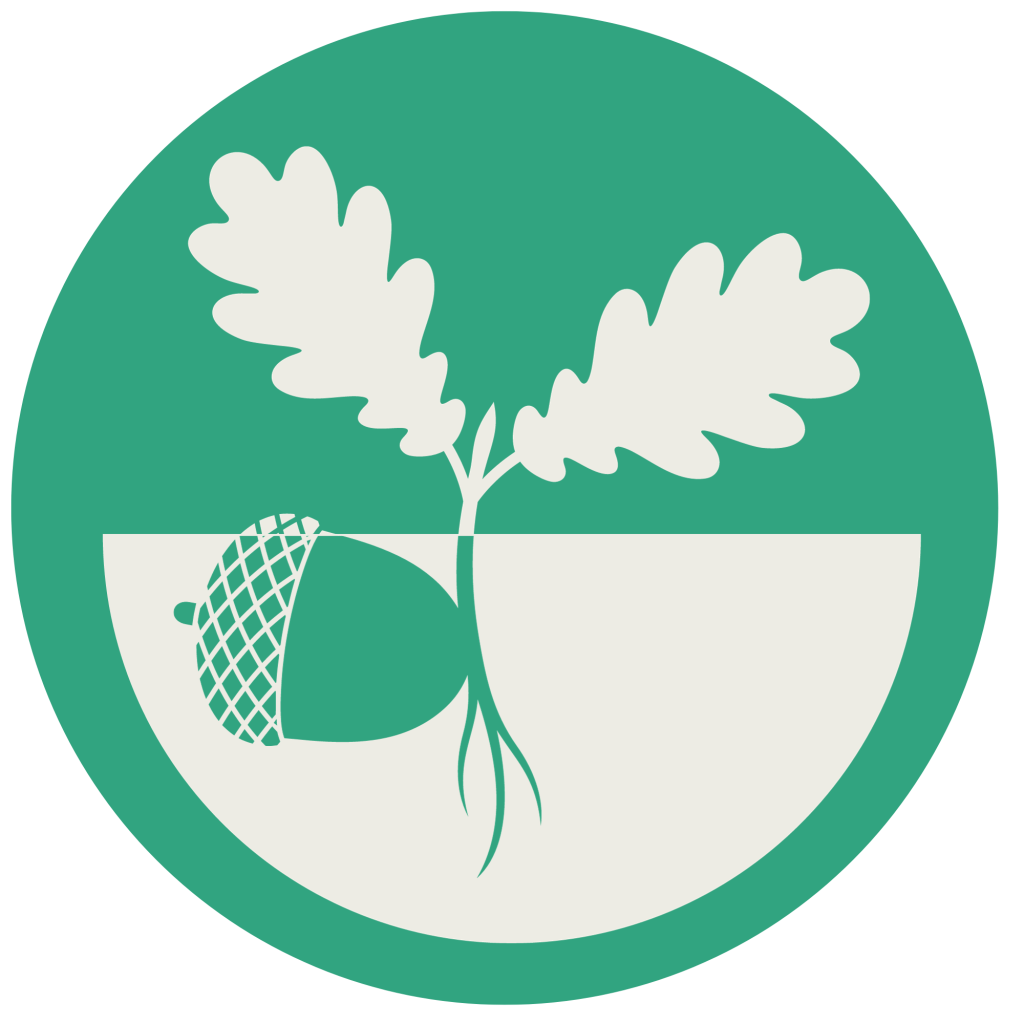
- Manage noxious invasive plants.
- Provide 2 out of 4 vegetation layers.
- Incorporate at least 16 species of native plants.
- Add at least 16 plant practices.
Level III: Oak

- Manage noxious invasive plants.
- Provide 3 out of 4 vegetation layers.
- Incorporate at least 24 species of native plants.
- Add at least 24 plant practices.
1. Manage Noxious Invasive Plants
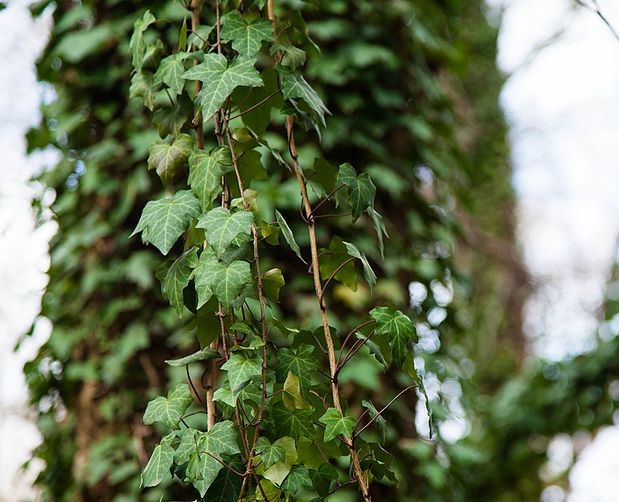
- Actively manage noxious invasive plants. Revisit every season. Select the most effective, lowest risk approach (manual, mechanical, cultural, chemical…).
- Minimize the use of pesticides (including herbicides, insecticides, fungicides, and rodenticides) and look for alternatives.
- If using pesticides, understand: when to apply, how to interpret label directions, and how to calculate mixing and application rates.
Actively managing all noxious invasive plants in your designated habitat is required for certification. Invasive plants don’t have natural controls (like diseases or pests) to restrict their growth. Invasive and noxious plants will outcompete native plant species and can produce chemicals that restrict the growth of other plants. This can result in a monoculture with limited biodiversity. While invasive plants can support some insects, they are not good options to support diverse insect communities. To prevent reinfestation, make sure to have a replanting plan before removing invasive plants.
2. Provide Vegetation Layers
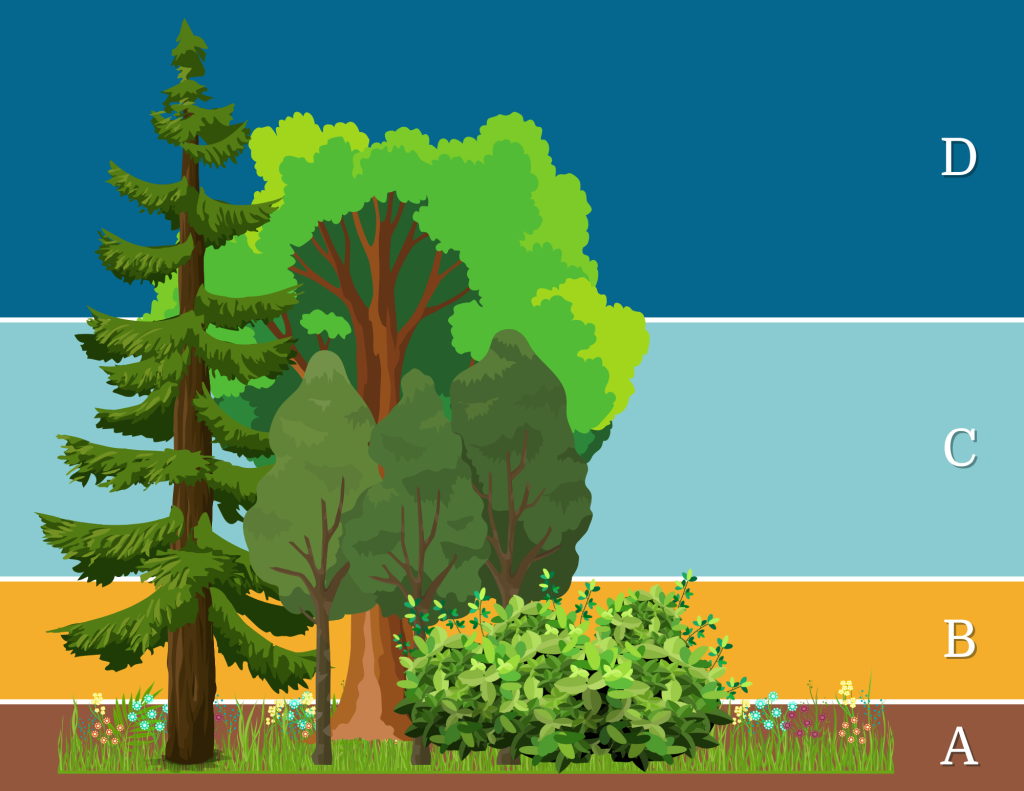
Planting and supporting different types of vegetation at different heights helps create a diverse habitat for various wildlife.
This includes:
- Canopy layer: tall trees (“D” in diagram)
- Midstory layer: medium-sized trees (“C” in diagram)
- Shrub layer: shrubs of all sizes (“B” in diagram)
- Ground layer: flowers/groundcover (“A” in diagram)
For More Info…
3. Incorporate Native Plants
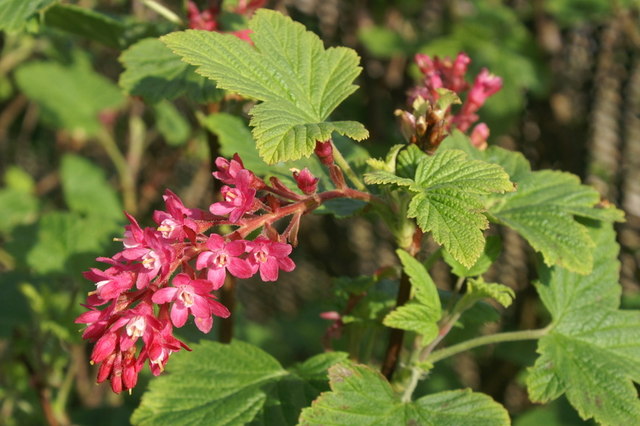
When selecting plants for your little habitat, be sure to select the right plant for the right place and choose species that are native to the Willamette Valley and neighboring ecoregions. Native plants are well-adapted to the local climate and soil conditions, and they provide important habitat for local wildlife including birds, insects, and mammals. To help support a diversity of wildlife species, plant a variety of native plant species that have different flower colors, shapes, sizes, and scents, and produce fruits, nuts, seeds and bloom at different times of the year to support pollinators and other wildlife species.
Acorn (Level I): You have at least 8 different species.

Seedling (Level II): You have at least 16 different species.

Oak (Level III): You have at least 24 different species.

4. Add Plant Practices
Regenerative & Wildlife Gardening Techniques
Incorporate Trees, Shrubs, and Woody Features
Acorn (Level I): You have at least 8 different practices.

Seedling (Level II): You have at least 16 different practices.

Oak (Level III): You have at least 24 different practices.

Below you will find more information about each of these Plant Practices.
Regenerative and Wildlife Gardening Techniques
Provide resources for a focus species (your pick!)
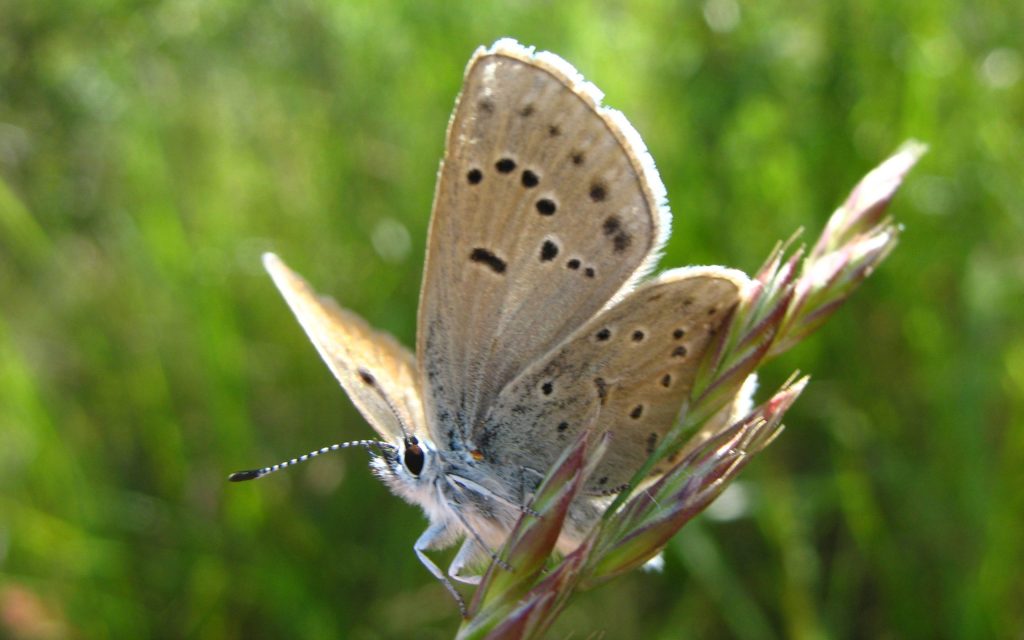
All wildlife need food, water, and shelter to survive. By providing these, you help species thrive. Different animals—like bees, moths, birds, and others—have different needs. If you want to support a specific species, you can learn more about their requirements through research or by contacting Kassi Roosth for technical assistance.
For More Info…
Contact Kassi Roosth.
Leave dead stems and seed heads over winter.
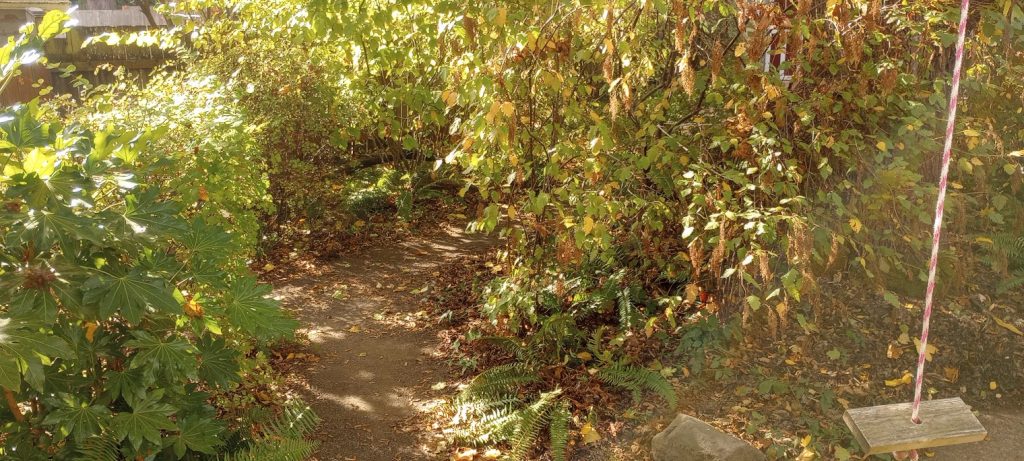
Let parts of your garden remain intentionally less tidy, adopting a more wild, natural appearance. Allow plants to self-seed, leave dead plant materials standing, and keep areas of soil undisturbed. These simple changes can provide essential food and nesting sites for a variety of wildlife species including beneficial insects and birds.
For More Info…
Add native evergreen plants for winter cover.
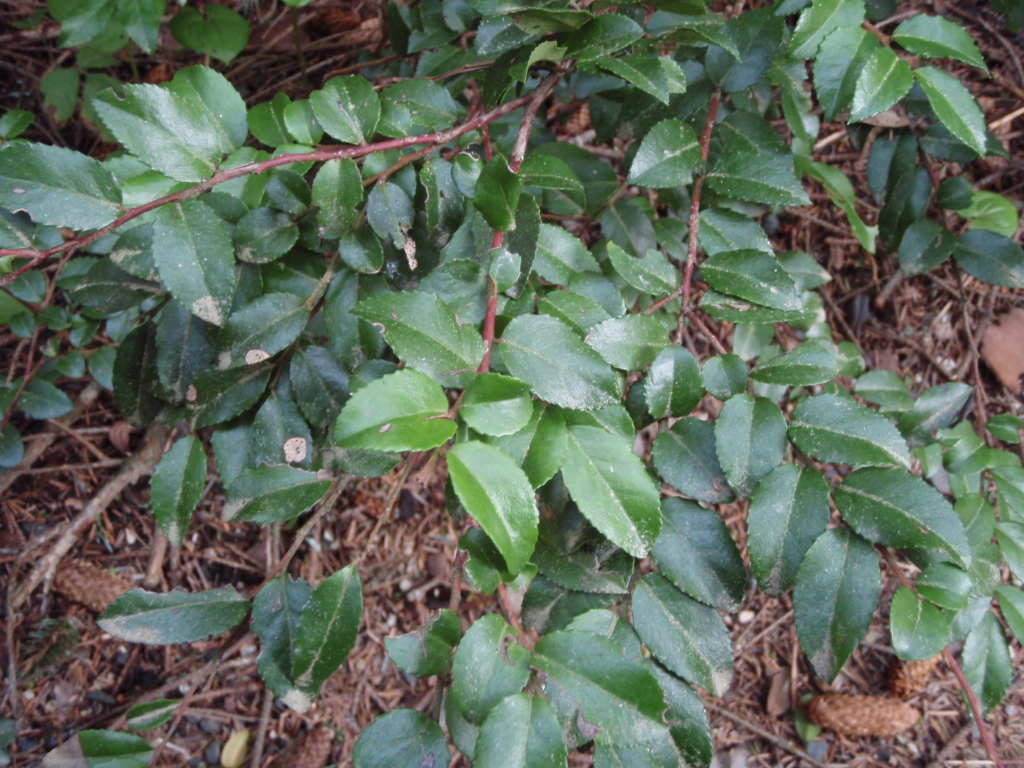
Evergreen plants offer important shelter for wildlife throughout the year, especially for species that overwinter in the Willamette Valley. These plants provide a reliable source of protection from predators and harsh weather conditions, helping wildlife species such as birds and amphibians stay safe and warm during the colder months.
For More Info
Create a wildlife corridor with a neighbor.
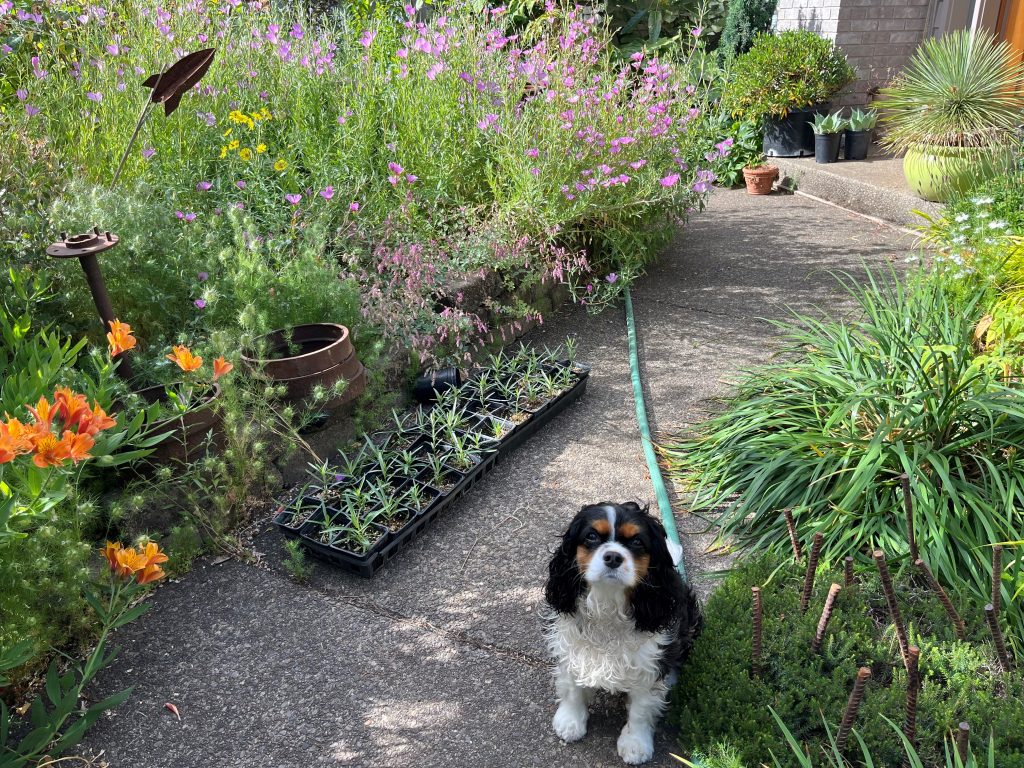
Creating a wildlife corridor with a neighbor can enhance habitat connectivity, allowing species to move freely and access the resources they need to thrive. This benefits the survival of both year-round residents and migratory species. By increasing the availability of resources, a corridor can boost the overall abundance and diversity of local wildlife.
For More Info…
Replace low-value ornamental plants with native species.
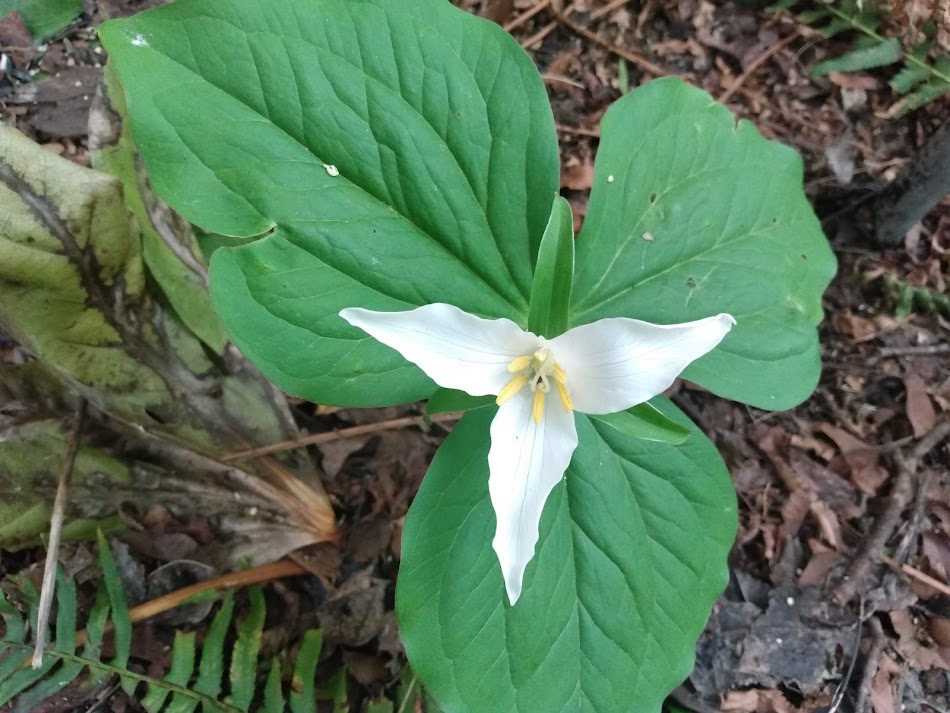
Consider replacing non-native ornamental plants that offer little value to wildlife or need excessive water and chemical inputs with native plants. Native plants require less maintenance, are better suited to our local climate, and support wildlife that has co-evolved with them. This will help enhance ecological value and create a more climate-resilient landscape
For More Info…
- Native Plants for Willamette Valley Yards>>>
- Contact our Native and Invasive Plant Specialist for recommendations.
Plant densely.
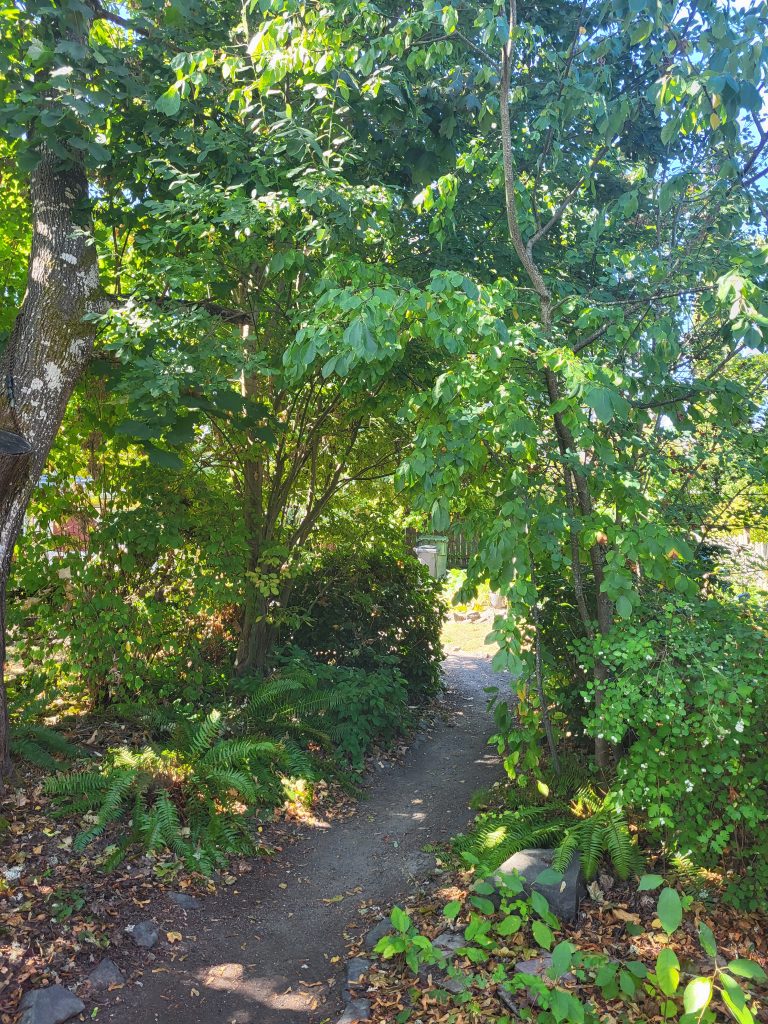
Planting densely helps create a more diverse and resilient habitat. It provides ample cover and food sources, promoting a variety of wildlife. Dense plantings improve biodiversity by offering different environments for different organisms to thrive.
For More Info…
Plant drought-tolerant native plants.
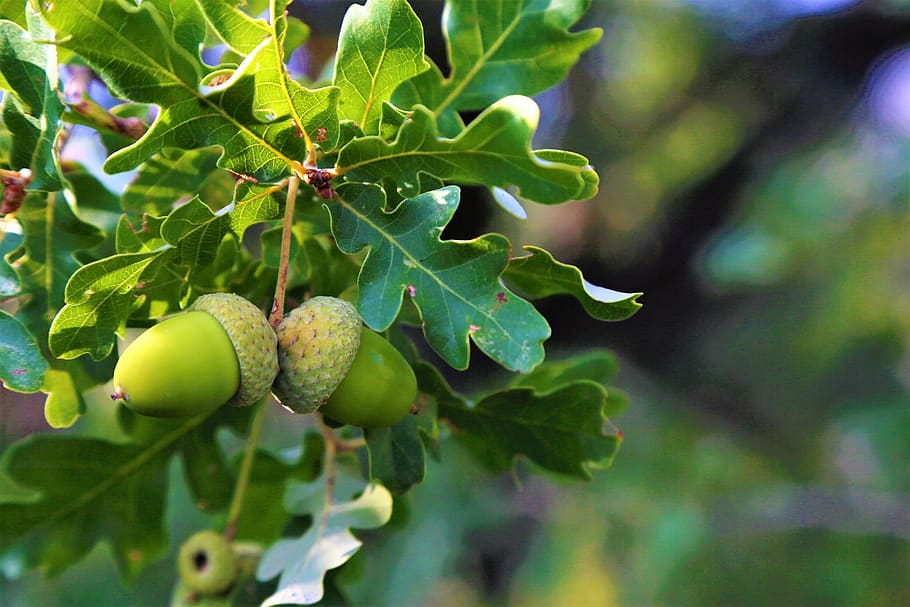
Drought-tolerant native plants are more water-efficient than non-native ornamentals, as they are naturally adapted to our region’s dry summer months. Their deep root systems make them more resilient in drought conditions, reducing the need for frequent watering. This can also help lower your water bill by minimizing irrigation needs.
Plant for Pollinators and Insects
Plant native spring-blooming plants.
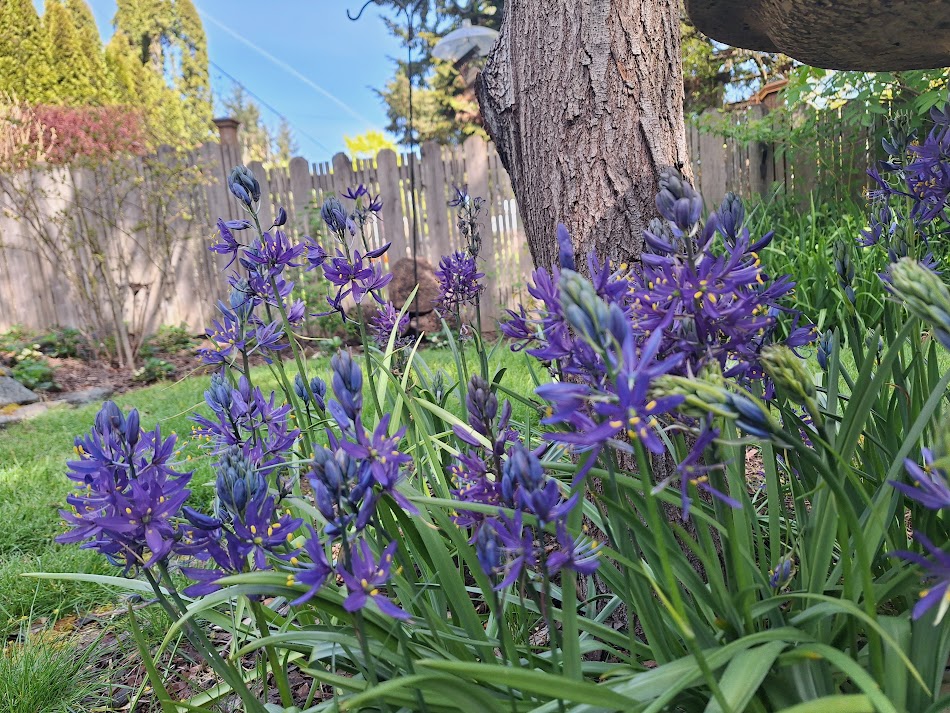
Providing blooms throughout the seasons supports pollinators by offering pollen (protein) and nectar (sugar) for their nutritional needs. Native flowering plants will support both generalist pollinators, which visit many types of flowers, and specialist pollinators, which focus on specific species. Use these resource links to learn about native flowers that bloom in the spring.
Plant native summer-blooming plants.
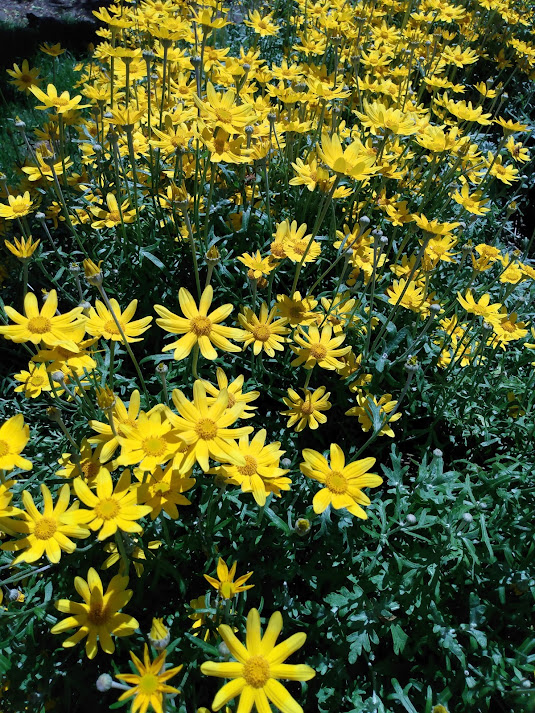
Providing blooms throughout the seasons supports pollinators by offering pollen (protein) and nectar (sugar) for their nutritional needs. Native flowering plants will support both generalist pollinators, which visit many types of flowers, and specialist pollinators, which focus on specific species. Use these resource links to learn about native flowers that bloom in the summer.
For More Info…
Plant native fall-blooming plants.
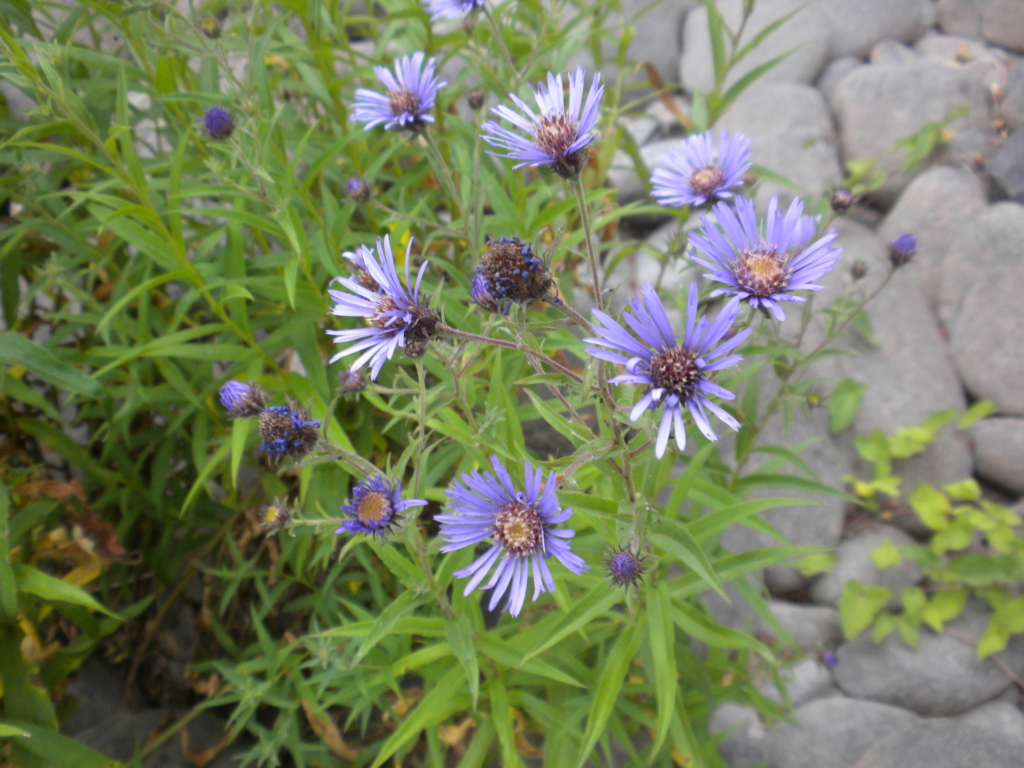
Providing blooms throughout the seasons supports pollinators by offering pollen (protein) and nectar (sugar) for their nutritional needs. Native flowering plants will support both generalist pollinators, which visit many types of flowers, and specialist pollinators, which focus on specific species. Use these resource links to learn about native flowers that bloom in the Fall.
For More Info…
Plant late winter-blooming plants.
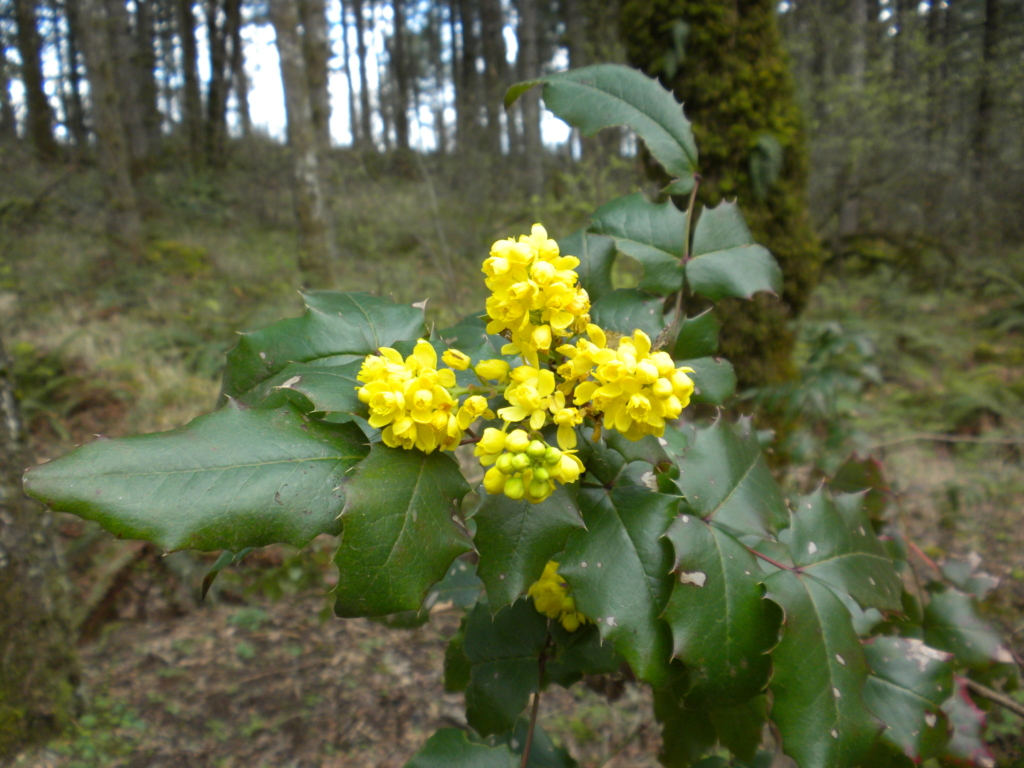
Providing blooms throughout the seasons supports pollinators by offering pollen (protein) and nectar (sugar) for their nutritional needs. Native flowering plants will support both generalist pollinators, which visit many types of flowers, and specialist pollinators, which focus on specific species. Use these resource links to learn about native flowers that bloom in the Fall.
For More Info…
Add caterpillar host plants.
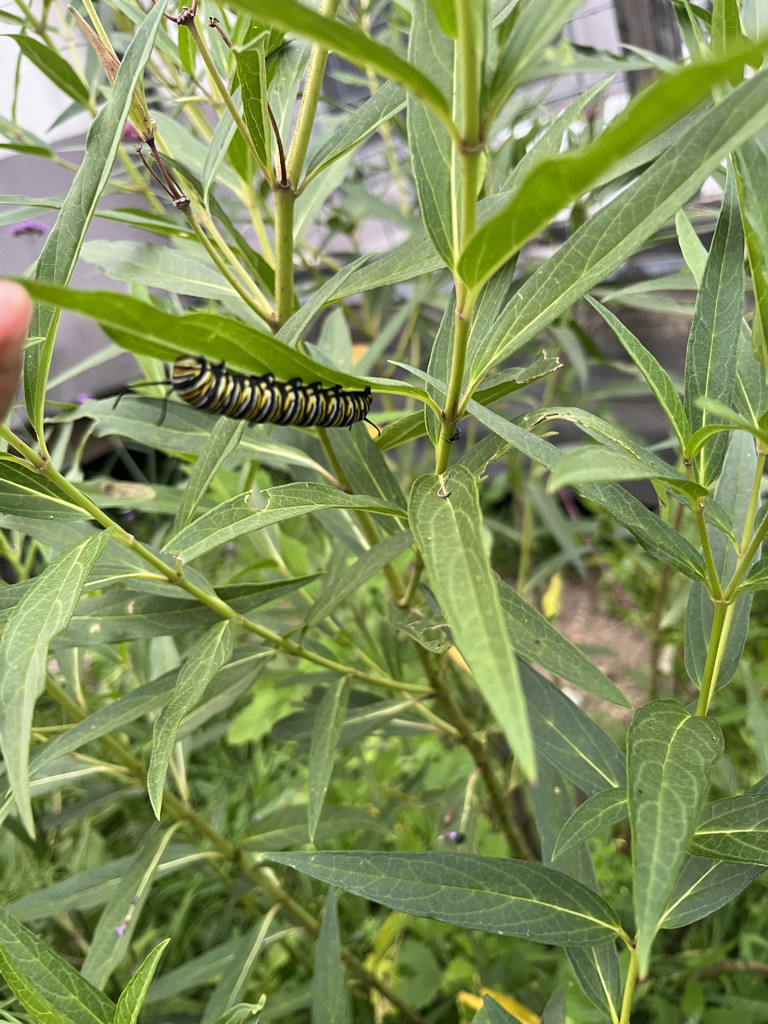
Caterpillar host plants are crucial because they provide the essential food source for caterpillars during their larval stage. Without these plants, caterpillars would not be able to grow, develop, or survive to eventually become butterflies or moths. These plants are specifically adapted to meet the nutritional needs of particular caterpillar species, and they also offer protection from predators.
For More Info…
Plant at least 5 different native flower colors.
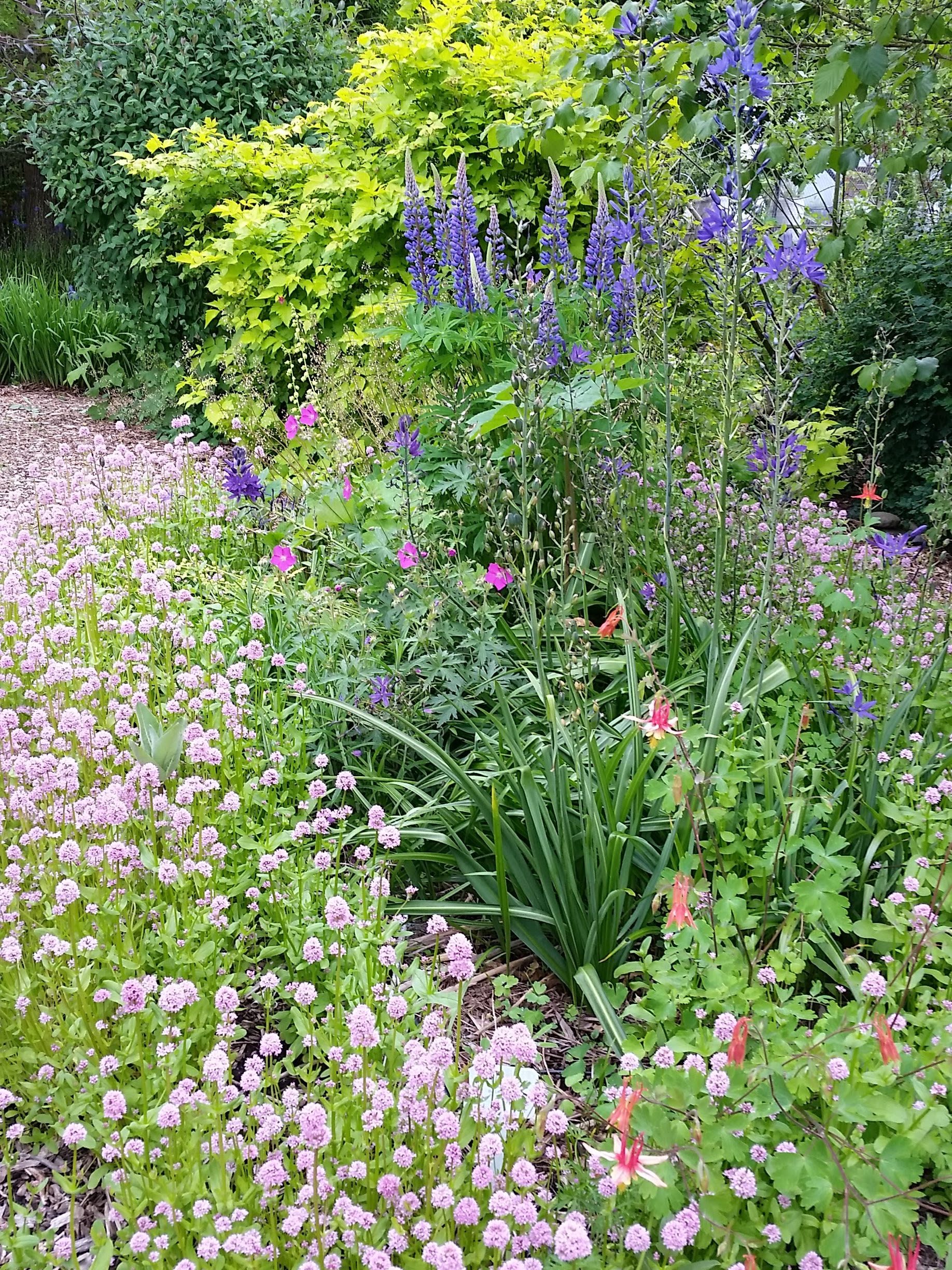
Planting a variety of wildflower colors helps attract a wider range of pollinators, such as bees, butterflies, and birds, as different species are drawn to specific colors, shapes, and scents. Additionally, this diversity extends the blooming period, providing a continuous food source for pollinators throughout the growing season.
Plant big patches of each species.

According to the National Park Service, “Planting flowers in clumps, rather than scattering single flowers throughout the yard, makes it easier for pollinators to locate their next meal.”
Patches, or clumps, of about 3 feet in diameter will be visible to pollinators flying overhead.
Incorporate Trees, Shrubs, and Woody Features
Plant a new native tree.
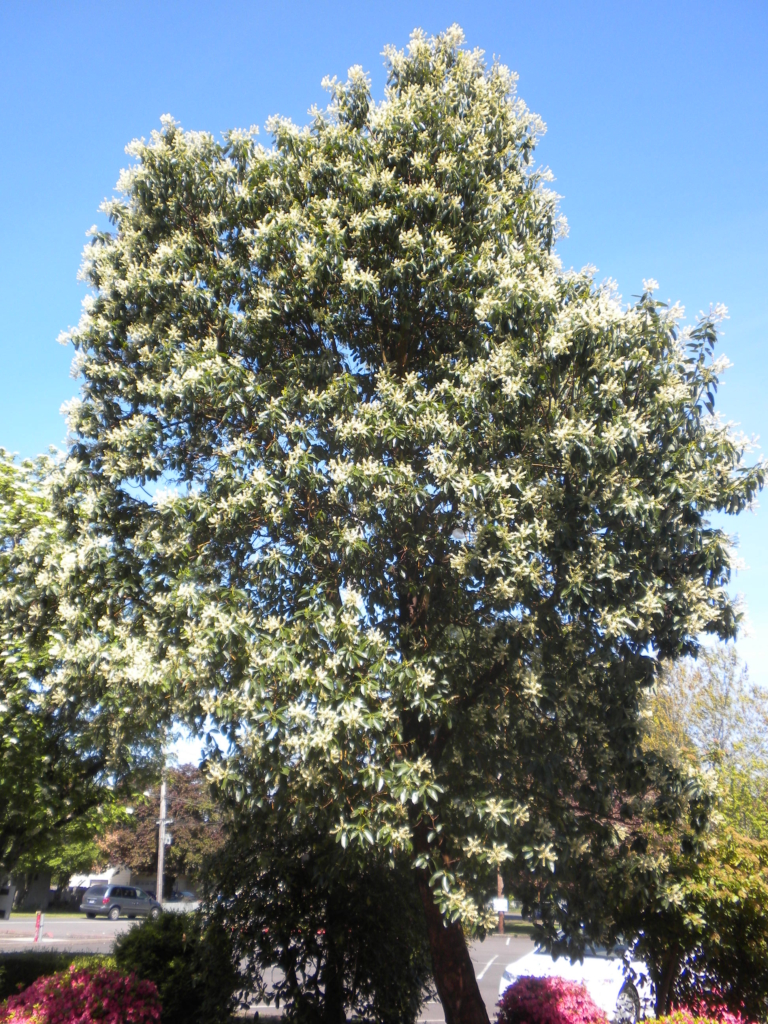
Planting a new native tree offers many benefits for the environment. Native trees provide food, shelter, and habitat for local wildlife, including birds and insects. They improve air quality by absorbing carbon dioxide and releasing oxygen. Native trees also need less water and care, making them easier to maintain. Their roots help prevent soil erosion and support healthier soil.
For More Info…
Plant fruit producing plants.
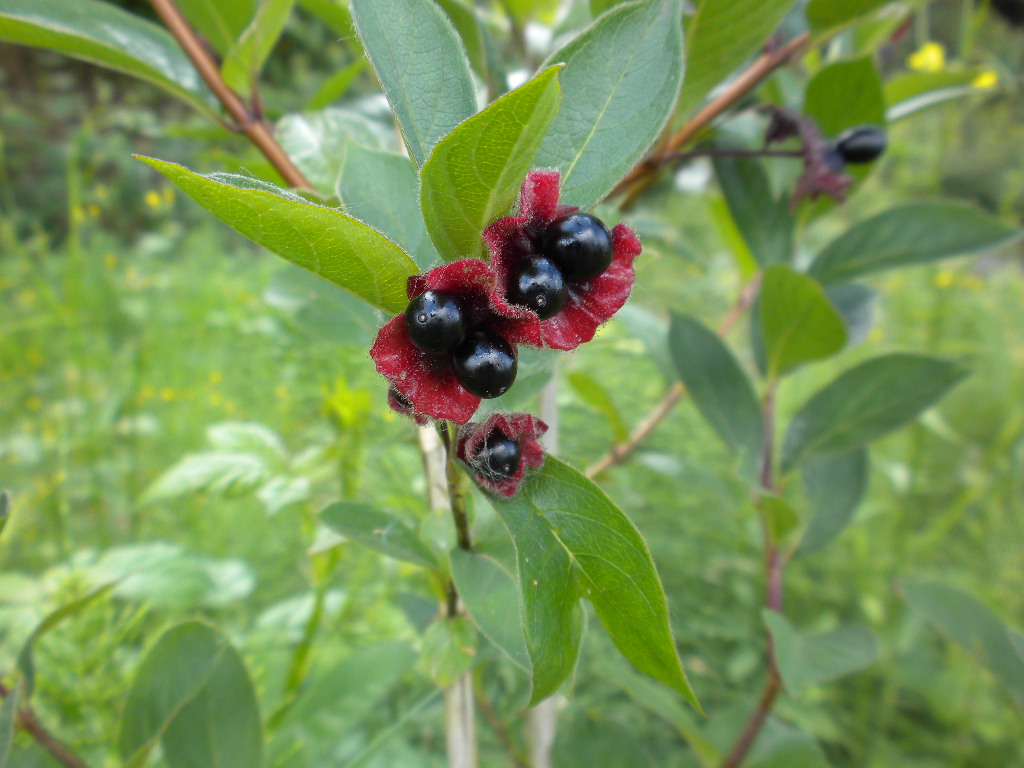
Planting fruit-producing plants can support a variety of wildlife species, including you! The flowers attract bees, butterflies, and other pollinators, which will help increase the production of fruit. The fruit serves as a vital food source for birds and small mammals, especially during the Fall and Winter months when other food sources may be limited.
Install a native hedgerow.
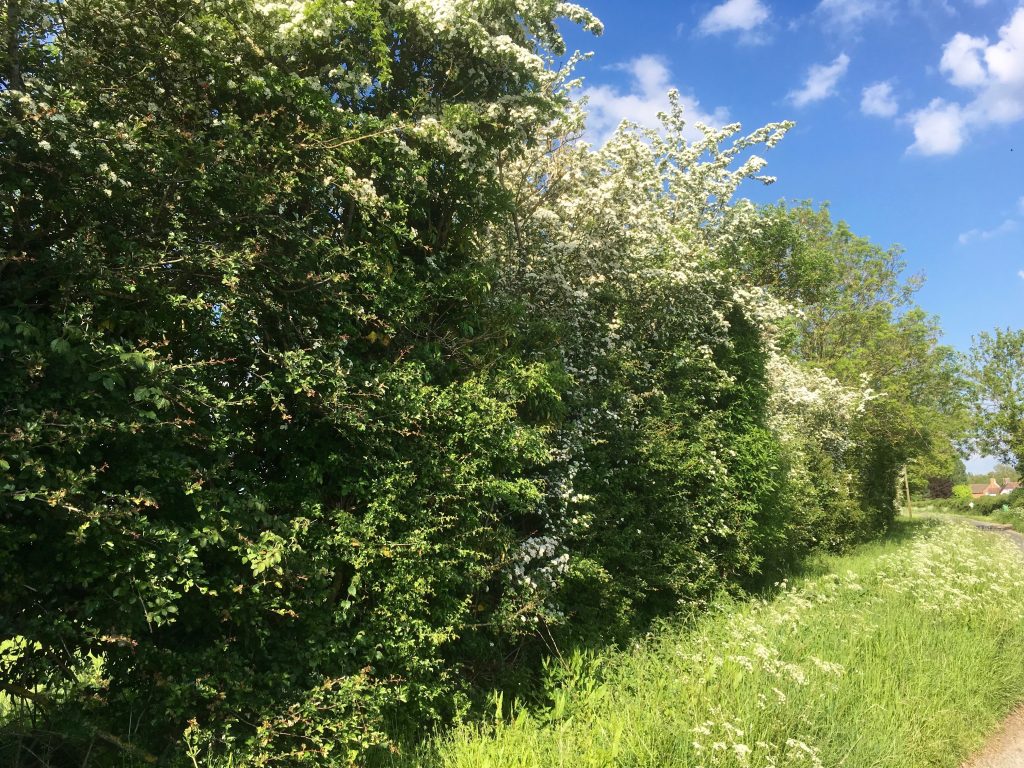
A hedgerow is a designed and managed line of shrubs, trees and flowers that can benefit various wildlife species. Benefits include providing habitat connectivity, cover, nesting sites, and various food sources including fruits, seeds, nuts, and berries that sustain many wildlife species, especially during the winter months when food sources may be scarce.
For More Info…
Retain a snag or nurse log.
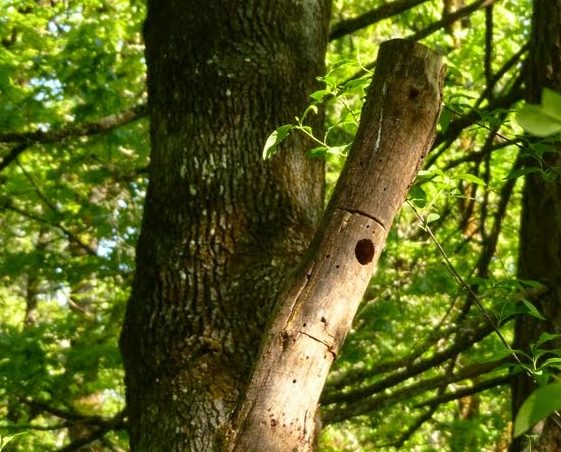
Snags (a standing dead tree) support woodpeckers, owls, and songbirds that rely on snags for nesting cavities. These holes are often excavated by woodpeckers and later used by other species. Snags can be lowered to a safe height to mitigate safety hazards and still retain ecological benefits. Nurse logs (fallen or decaying log) contribute to micro habitats, foraging opportunities, and nutrient cycling as wood decomposes back into the soil.
For More Info…
Create a brush pile.
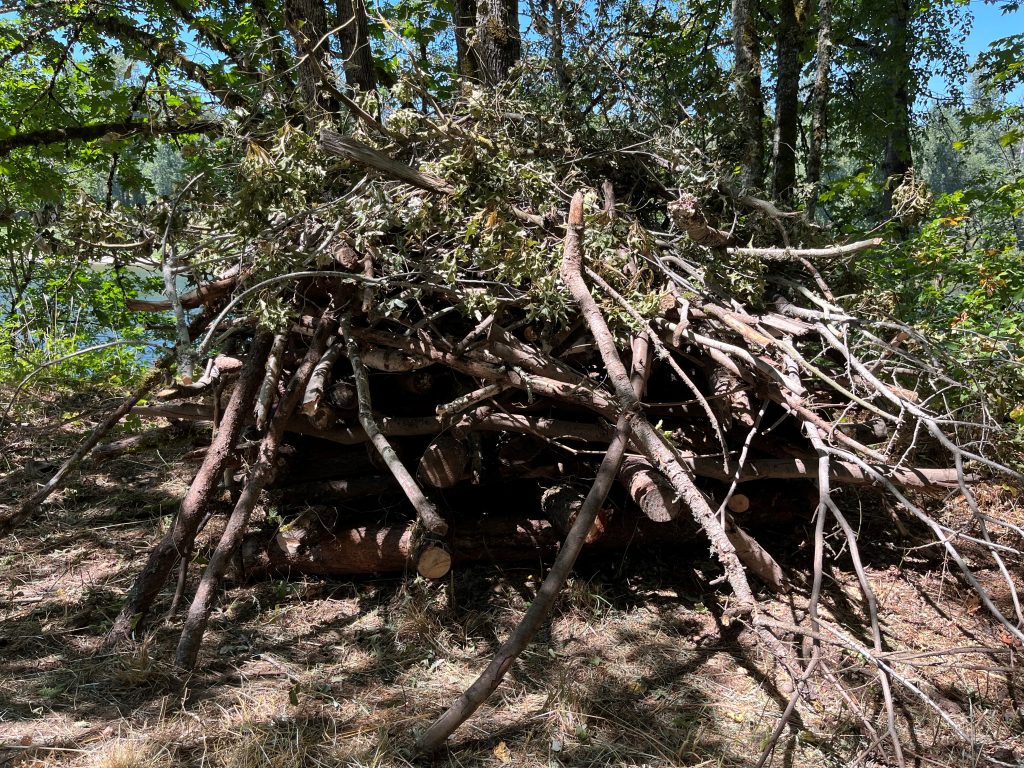
A brush pile is a collection of branches, twigs, and other woody debris that stacked or piled together in a designated area. Benefits include providing shelter, nesting sites, and foraging opportunities for birds, beneficial insects, and reptiles. When constructing a brush pile place the larger woody debris as the foundation with openings so wildlife can enter the pile. The top of the pile should have the smaller and brushy materials to help create weather protection.
For More Info…
Shade impervious surfaces.

Shading impervious surfaces such as walkways, driveways, and patios with tall plants in urban areas provides numerous benefits. It helps mitigate the urban heat island effect by cooling the surrounding environment, offers valuable wildlife habitat for various species, and protects people from excessive sun exposure, especially during the summer months.
For More Info…
Prune plants to provide hollow stems.

Pruning plants to provide hollow stems offers several benefits for cavity-nesting insects. These hollow stems create ideal nesting sites for species like leaf cutter and carpenter bees, and other beneficial insects. This can include elderberries, raspberries, and thimbleberries. Around 30% of native bees rely on these on hallow crevices to lay their eggs.
Provide Ground Layer Habitat
Reduce the area of lawn
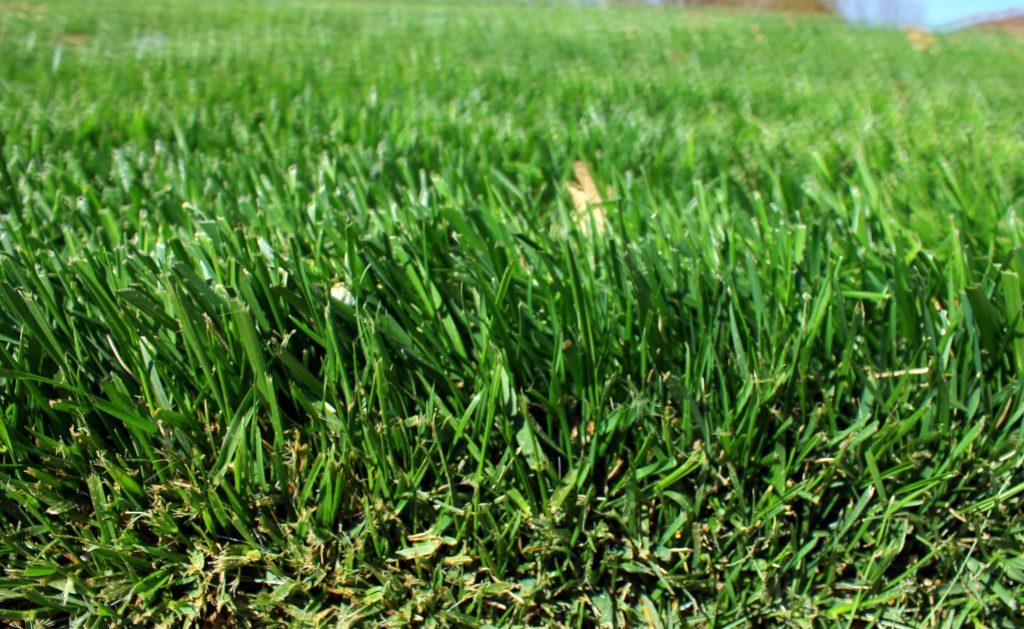
Reducing lawns can help conserve water needed for irrigation, prevent pollution runoff from fertilizers and pesticides entering local water ways, and increase biodiversity for wildlife. Consider replacing lawn that you are not actively using with Meadowscaping or planting a Wildlife Friendly Garden.
For More Info..
Reduce mowing frequency
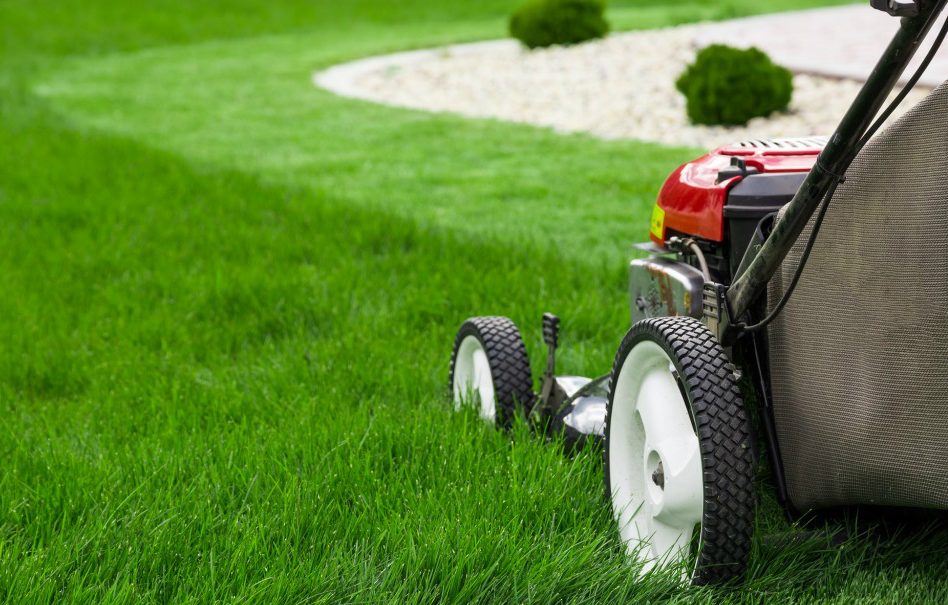
Reducing mowing frequency or increasing mowing heights, especially during the months of May and June, can have a significant positive impact on pollinators and other wildlife species by providing food sources and nesting sites.
Reducing mowing frequency may result in increased presence of lawn weeds like dandelions, which provide benefits to pollinators. If these weeds can be tolerated, then this action item should not be considered.
Leave areas un-mowed.
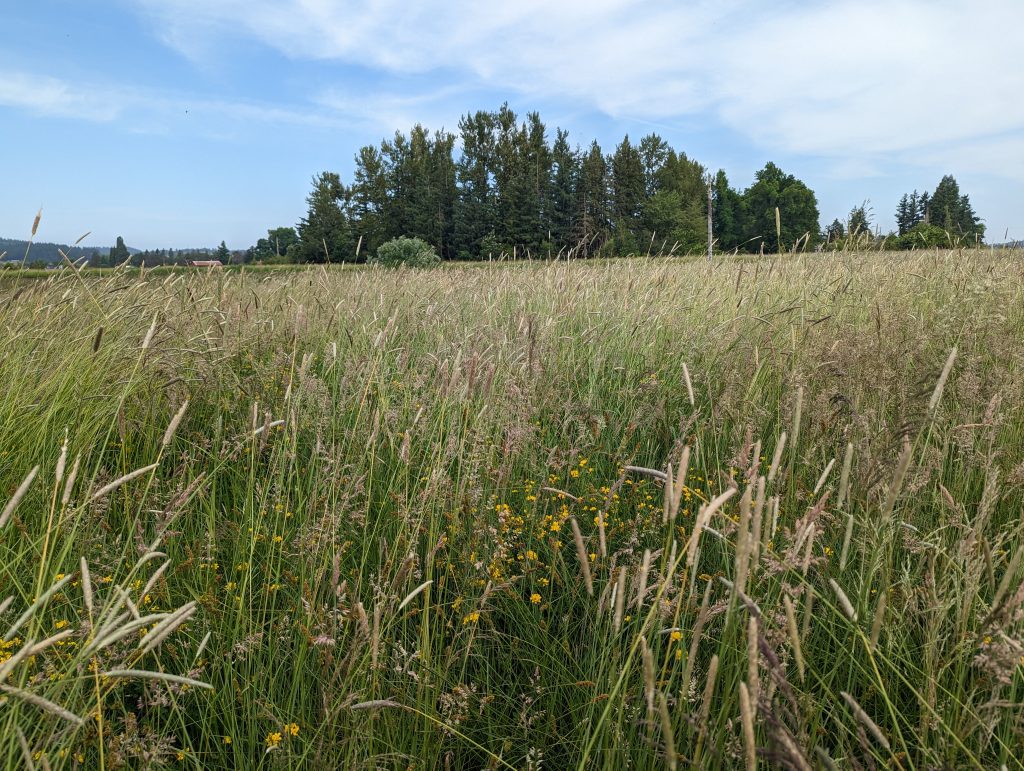
Leave portions of your lawn unmown throughout the year to establish a tall grass habitat that supports beneficial insects and wildlife. Regularly monitor these unmown areas for invasive weeds and manage them as necessary. If mowing is required to control weeds, try to avoid doing so during the peak nesting season, from May 1st to July 15th, to protect ground-nesting birds.
For More Info…
Plant a bee-friendly lawn.
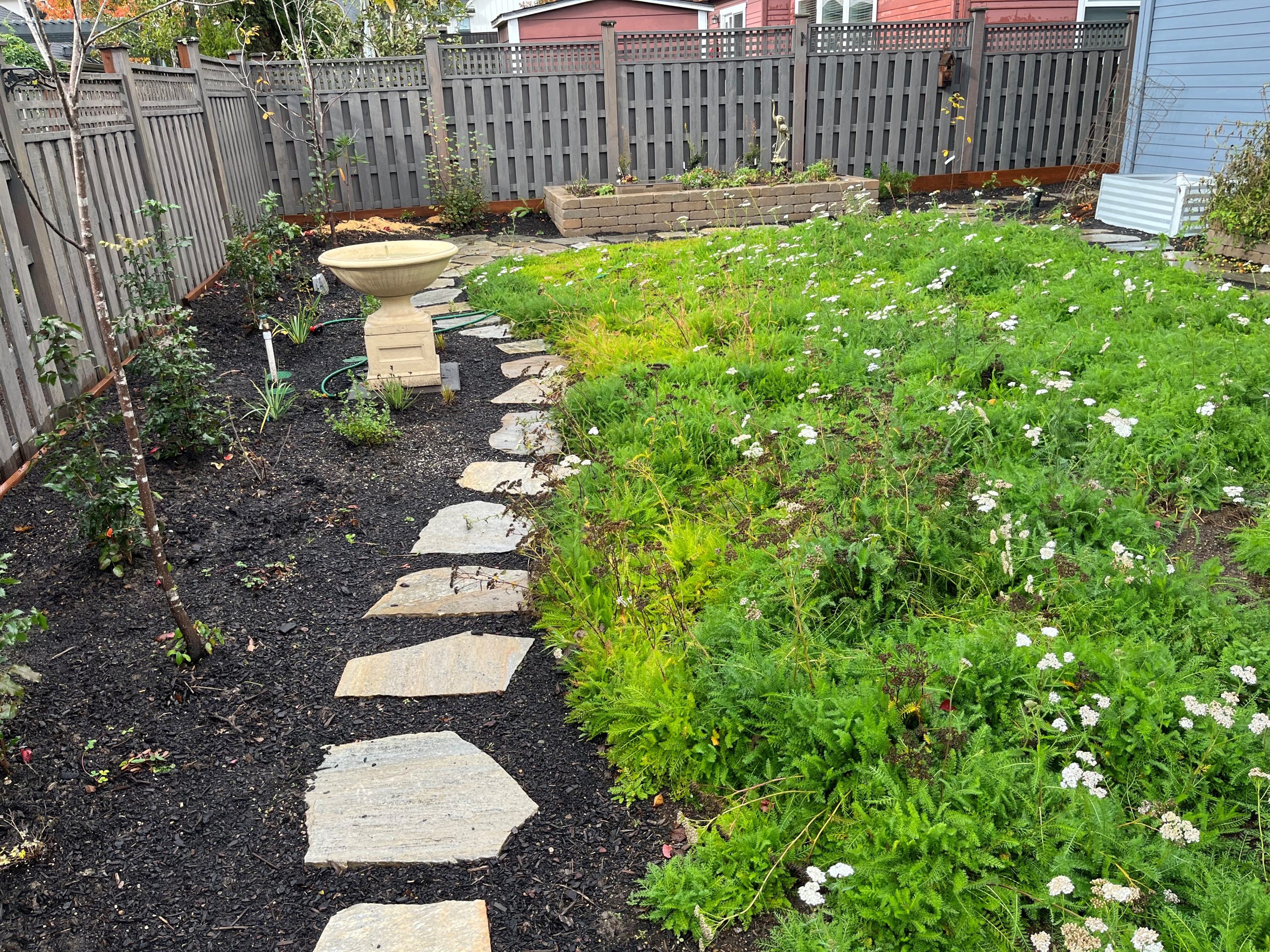
For More Info…
Plant a native wildflower meadow.
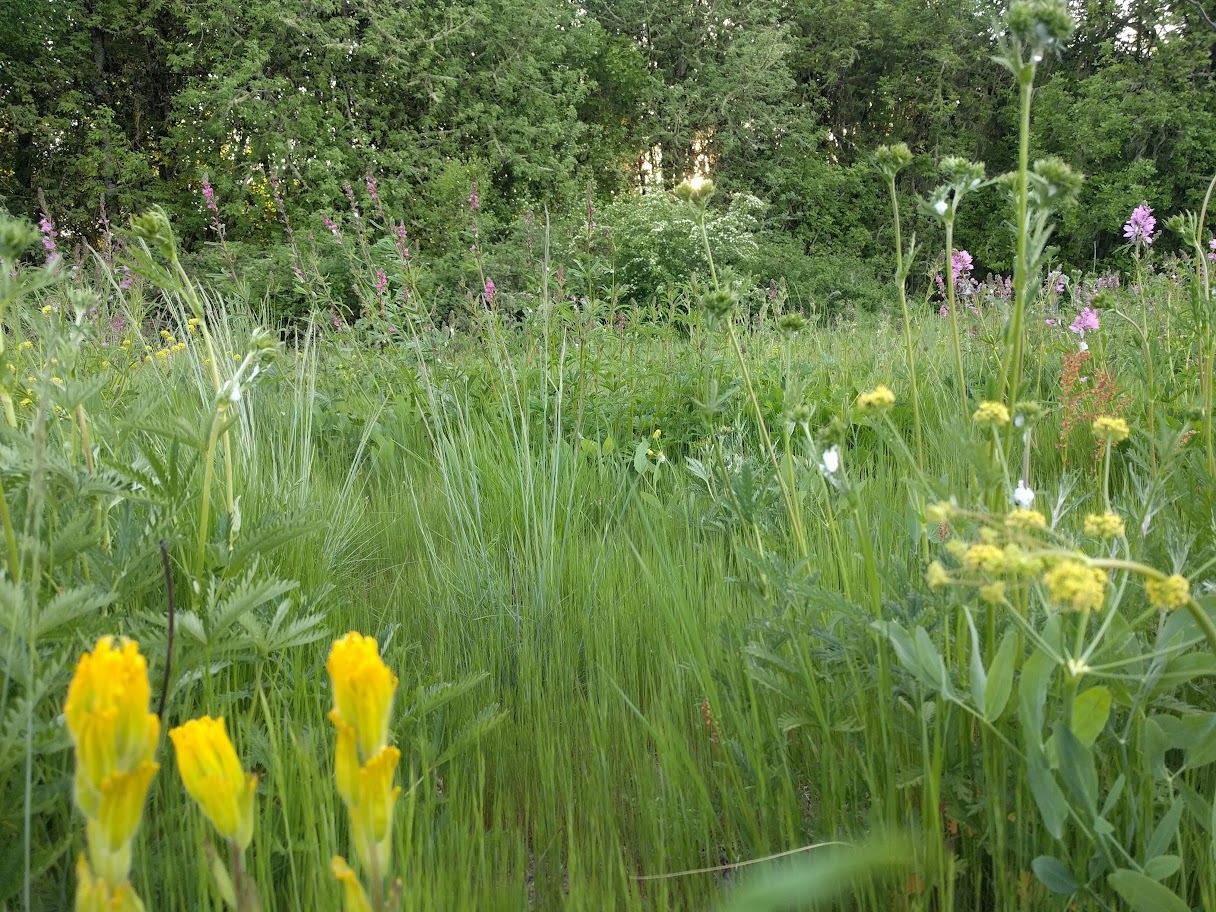
Meadows are grassy managed areas in rural and urban settings. An urban meadow incorporates native prairie plants to provide benefits for pollinators and stormwater. This practice helps reduce our ecological footprint, conserves and increases biodiversity, and increases awareness of our natural and cultural heritage.
For More Info…
Plant native ground covers.
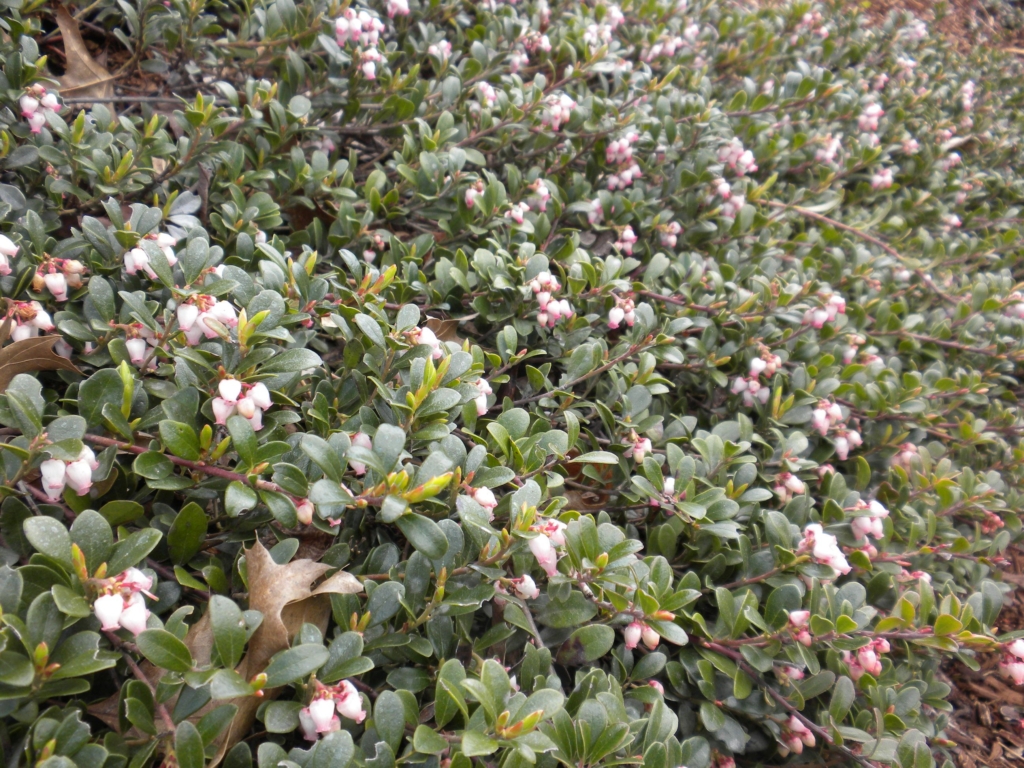
Ground covers offer numerous benefits for wildlife and the environment. They provide shelter and food for various species, help control erosion, and suppress weeds naturally. Their root systems improve soil health by promoting fertility and moisture retention.
For More Info…
Include understory plants.
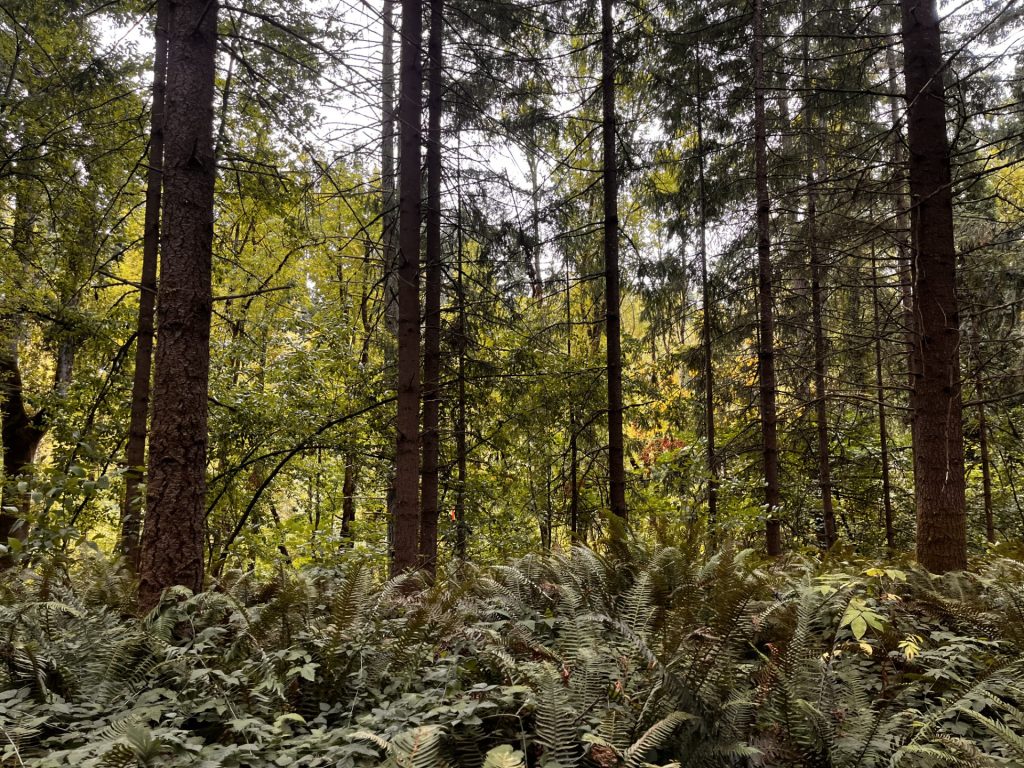
Including understory plants in your yard creates a layered habitat that supports a diverse range of wildlife. The varied plant heights provide different levels of shelter and food sources, enhancing biodiversity by offering multiple niches for different species and making your yard a more resilient and thriving ecosystem.
For More Info…

